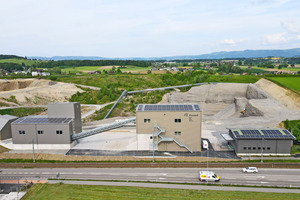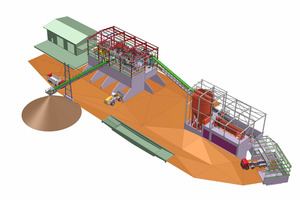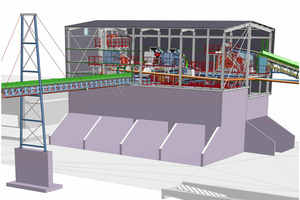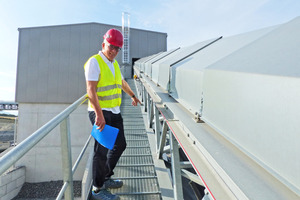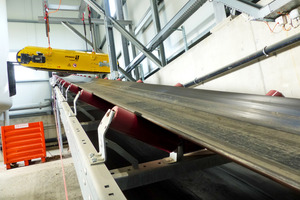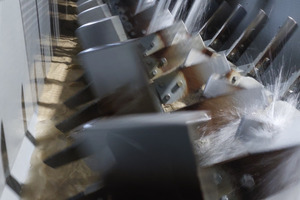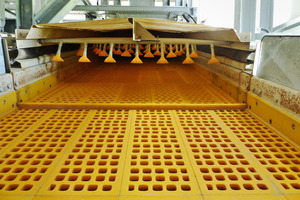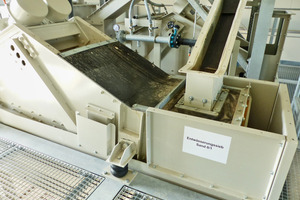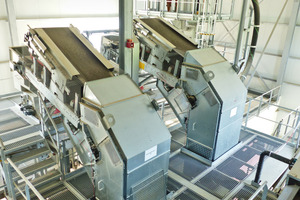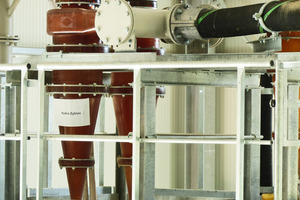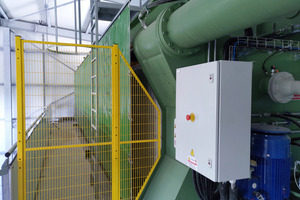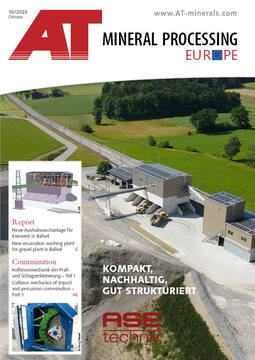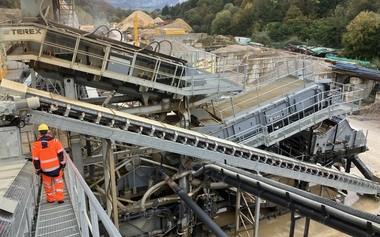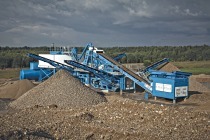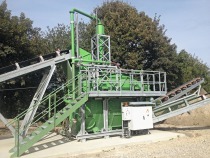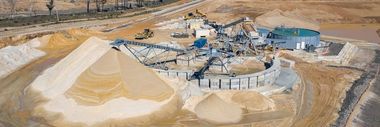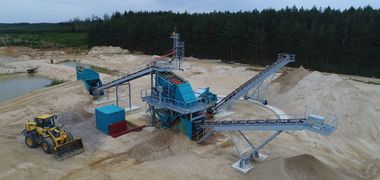Gravel plant in the municipality of Ballwil receives new excavation washing plant
At present, about 50 000 to 70 000 m3 are mined per year. The existing deposits on the site of the gravel plant are expected to last for another 25 to 30 years. Here, too, the focus is on future generations. With an excavation washing plant, the gravel that is still contained in the gravel deposit can be washed out of the material that was previously sent to the landfill. This has two very decisive advantages: Resources are conserved, thus extending the life of the deposit, and the amount of material to be deposited, consisting of fines, sand and gravel is reduced by the sand and gravel removed – thus also extending the “life” of the landfill. In mid-2019, the citizens of Ballwil decided to build the excavation washing plant.
On 11.02.2021 the groundbreaking ceremony took place. The company ASE Technik AG from Hochdorf/Switzerland was entrusted with the construction of the new excavation washing plant. With the help of the new plant, the fines can be removed and the following 4 fractions: Construction Gravel 4/120, Fine Sand 0/1, Sand 0/2 and Sand 2/4 to be obtained as end products. The decisive feature of the plant is its compact and cost-effective design. Especially for processing plants of small to medium size, this keeps the investment, technical operation and construction time manageable. Thus, this plant also stands as a model for similar projects where compact and financially optimized plants are the right solution.
How exactly is the gravel-containing material from the overburden treated and processed? The incoming material is fed by a pneulader via a hydraulic tiltable bar grate (coarse material separation at approx. 250 mm) into a feed chute. From there, the material is transferred to the plant feeding belt via a discharge belt that can be regulated in terms of quantity, and then enters the log wash. This double-shaft log wash is particularly suitable for washing gravels and sands heavily contaminated by clay, loam and other fine materials. By adjusting the inclination, the dwell time of the material in the log washer can be adjusted, thus adapting the cleaning performance to the material. The dissolved impurities go into the washing water and are discharged by the overflow. The material is then rewashed via screens, dewatered and separated. To give the plant its compact and space-saving design, two double belt conveyors were installed for further material transport. The fine sand particles (0/1; 0/2) still contained in the wash water are separated by two cyclones before the water goes on to the water treatment plant. Adjustable conveyor belts also allow the final products, which then enter the silos/outside boxes, to be combined with the respective particle sizes as required and finished to form a final product. The plant has been designed so that additional classifying/sorting equipment or a crusher can be added if required at a later date.
In addition, the washing plant is equipped with a water treatment system so that the fresh water requirement, which is covered by the plant’s own rainwater, is low. The thickened sludge from the treatment reactor is dewatered via the chamber filter press. Only the material from the chamber filter press is now sent to the landfill.
“Startup with our test material worked well. With the cover material, we found that there was a very high fines content (clay and loam lumps). We still had clay balls included in the 4/120 component. Sand 0/1, 0/2 and round gravel were good, however. We then made some changes in the plant. In the pre-screening, we changed the screen linings. Thus, we were able to eliminate the initial problems. But it is normal that the plant first has to be adapted to the material,” said Roman Grüter, plant operator at the Ballwil gravel plant, summarizing the start-up phase of the plant. The washing plant was commissioned on Dec. 1, 2021, and is currently planned for an average output of 60 to 120 t/h, depending on the degree of contamination.
Gabriel Notz, Head of Gravel Plant and Infrastructure Ballwil, also considers the investment a success: “The plant worked well right from the start for mainly gravel-containing material. It became a bit more troublesome when we had a very high proportion of fines, for example in the overburden. This is grown material, i.e. the quality is very different in some cases. But even there, we were able to make a big step with ASE by making the sword wash steeper, which means the retention time is higher and we can now achieve good results.”
In addition to its own material from the overburden, the gravel plant also accepts outside material to process in the washing plant. However, only large quantities, as the plant then has to be adjusted to the material in each case. The foreign material is uncontaminated excavated material from preliminary construction projects.
For Gabriel Notz, the project is an investment in the future: “It has to be said clearly that we have not only built the plant for today, but it is planned for the entire time in which we will be mining here – this is a generation project. The point is that the next generations of Ballwil will simply be able to benefit from these gravel deposits for longer. The landfill is also finite, so we will save landfill volume in the future. The plant is designed so that we can expand it and then perhaps produce other components. And it would then be possible to process other foreign materials in the future.”
Author: Dr. Petra Strunk

